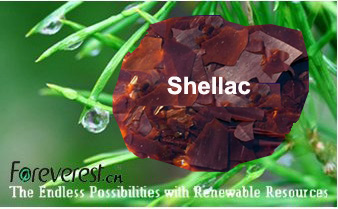|
Detailed Product Description
Shellac is a resin secreted by the female lac bug, on trees in the forests of China.
Shellac is processed and sold as dry flakes, which are dissolved in denatured alcohol to make liquid shellac, which is used as a brush-on colorant, food glaze and wood finish. Shellac functions as a tough all-natural primer, sanding sealant, tannin-blocker, odor-blocker, stain, and high-gloss varnish. Shellac was once used in electrical applications as it possesses good insulation qualities and it seals out moisture. Shellac is often the only historically-appropriate finish for early 20th-century hardwood floors, and wooden wall and ceiling paneling.
Shellac continues to be a popular candy glaze for pill shaped sweets such as
Skittles.
Shellac is a natural polymer and is chemically similar to synthetic polymers, and thus can be considered a natural form of plastic. It can be turned into a moulding compound when mixed with wood flour and moulded under heat and pressure methods, so it can also be classified as thermoplastic.
Shellac is soluble in alkaline solutions such as ammonia, sodium borate, sodium carbonate, and sodium hydroxide, and also in various organic solvents. When dissolved in alcohol blends containing ethanol and methanol, shellac yields a coating of superior durability and hardness.
Upon mild hydrolysis shellac gives a complex mix of aliphatic and alicyclic hydroxy acids and their polymers that varies in exact composition depending upon the source of the shellac and the season of collection. The major component of the aliphatic component is aleuritic acid, whereas the main alicyclic component is shellolic acid.
Shellac dissolves in a wide variety of alkaline solutions or rapidly drying alcoholic solvents but is resistant to a number of other solvents particularly hydrocarbons. Its film shows excellent adhesion to a wide variety of surfaces, possessing high gloss, hardness and strength. Shellac is a powerful bonding material with low thermal conductivity and a small coefficient of expansion. Its thermal plasticity and capacity of absorbing large amounts of fillers are noteworthy.Its electrical properties include high dielectric strength, low dielectric constant and characteristic freedom from tacking. It is resistant to the action of ultraviolet rays.
|





